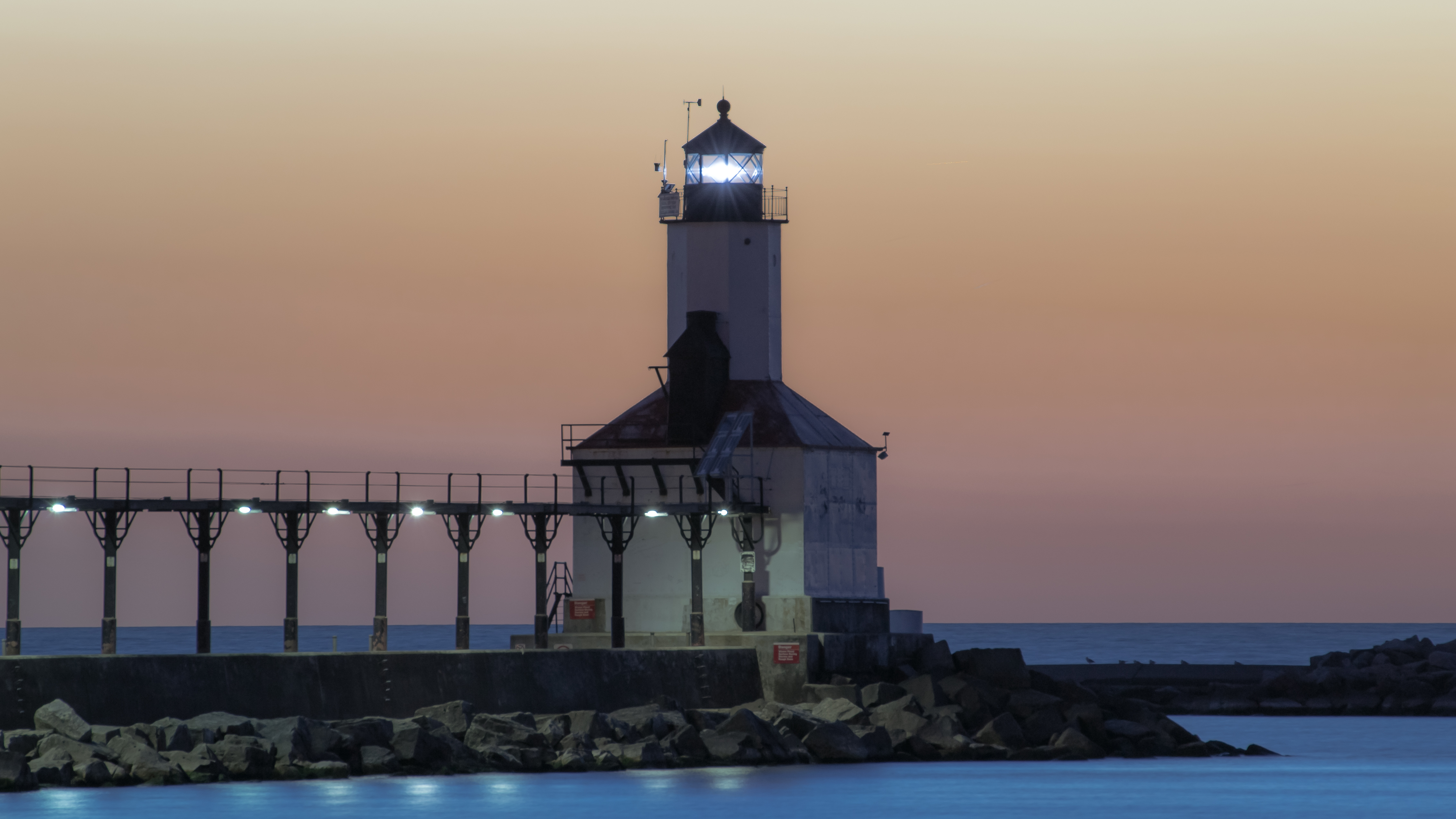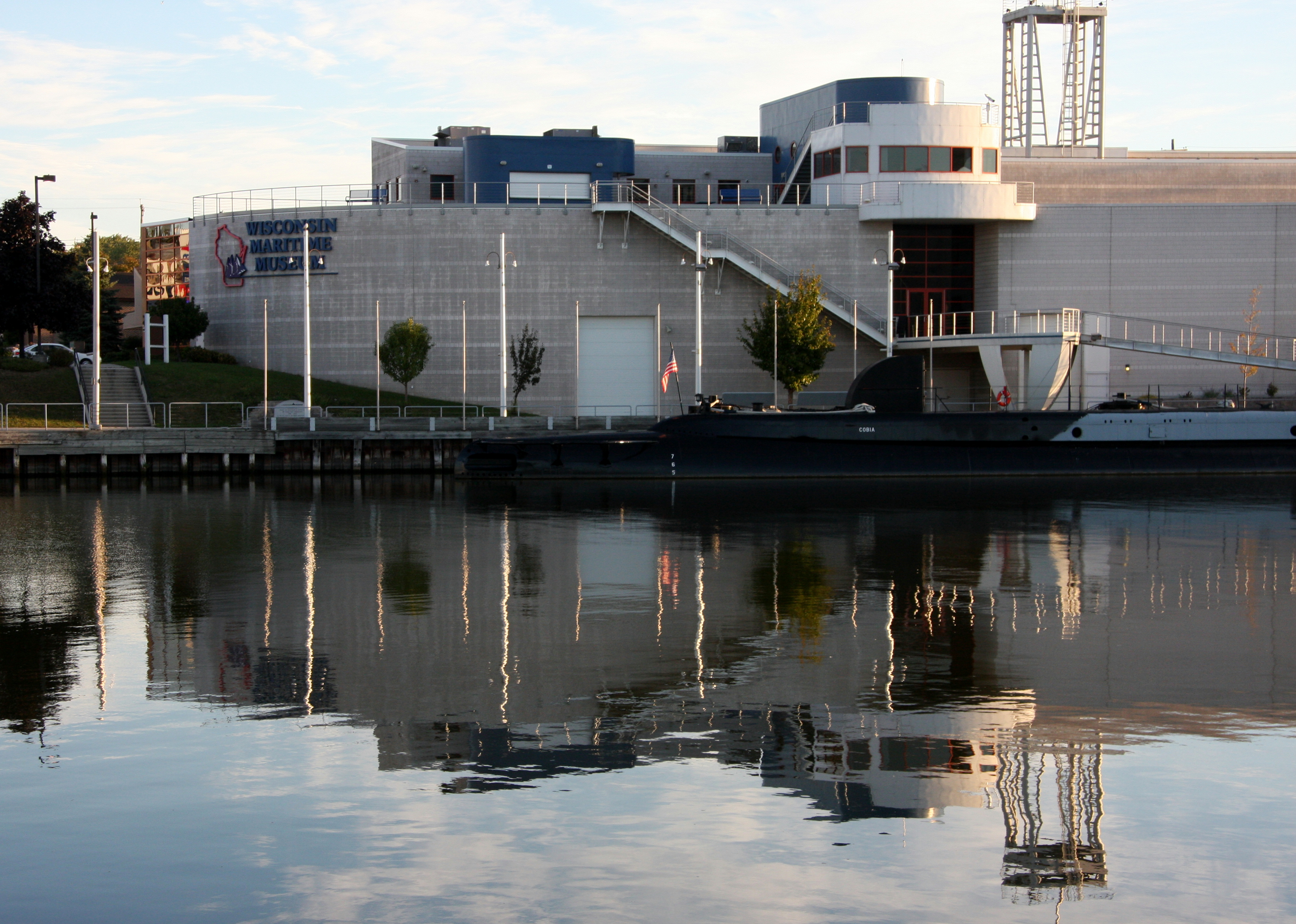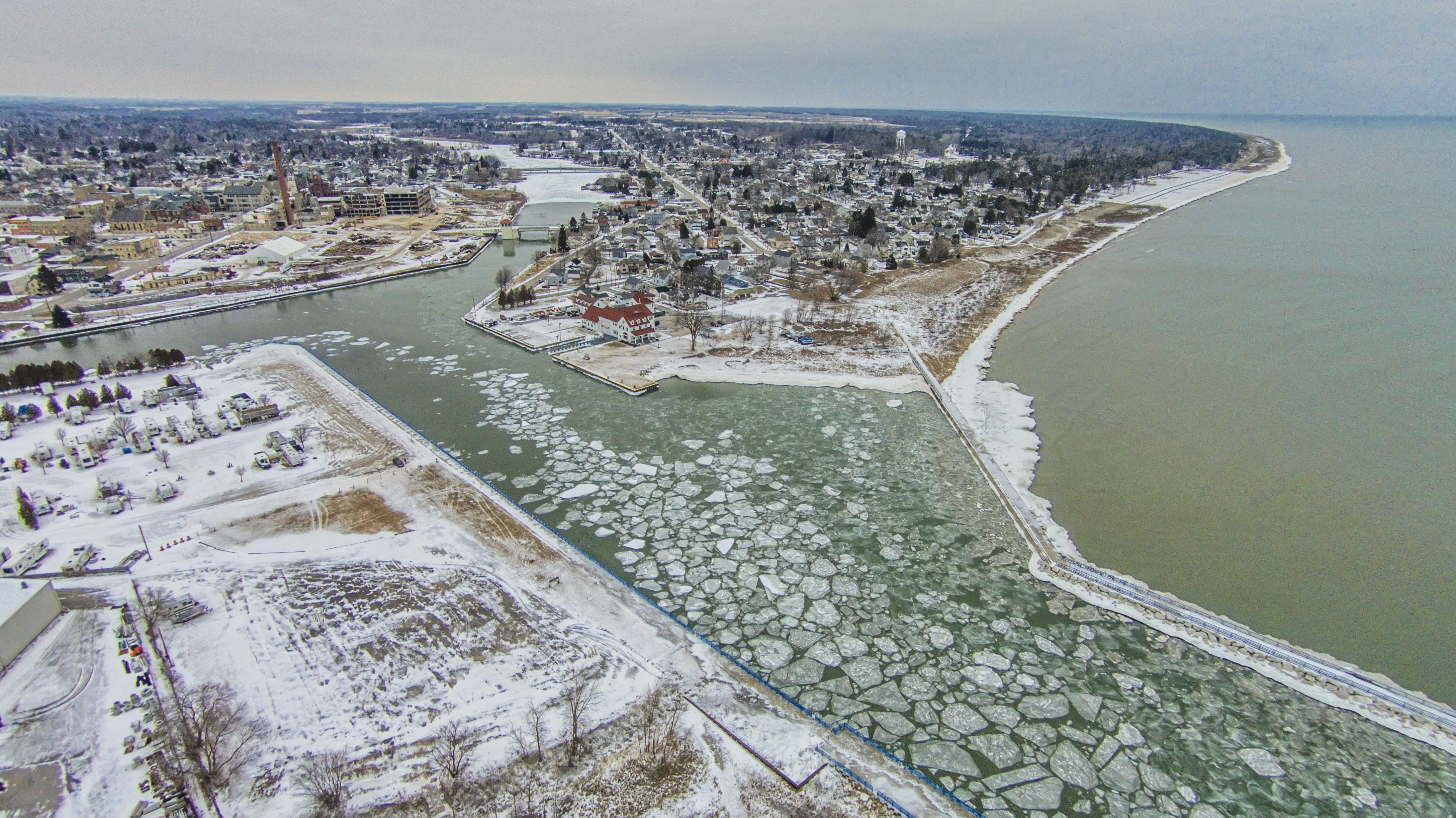|
America (shipwreck)
The America was a wooden schooner. Its shipwreck site is located off the coast of Carlton, Wisconsin in Lake Michigan. Service history The America was completed in Port Huron, Michigan in 1873. Primarily, the ship sailed on the lower areas of Lake Michigan. Its main cargo consisted of lumber and ice. Sinking On September 28, 1880, the ''America'' was en route to Escanaba, Michigan from Chicago, Illinois. The plan had been for it to pick up a load of iron ore that was to be sent to Michigan City, Indiana. That night, the ''America'' struck another vessel's scow line, causing catastrophic damage to the bow. The ship sank fast. A little over a week later, efforts to salvage the ''America'' were unsuccessful and the wreck was abandoned. The shipwreck was found in 1977. Its wheel is on display at the Wisconsin Maritime Museum in Manitowoc, Wisconsin and its anchor is on display at the Rogers Street Fishing Village in Two Rivers, Wisconsin Two Rivers is a city in Manitowoc Cou ... [...More Info...] [...Related Items...] OR: [Wikipedia] [Google] [Baidu] |
Lake Michigan
Lake Michigan is one of the five Great Lakes of North America. It is the second-largest of the Great Lakes by volume () and the third-largest by surface area (), after Lake Superior and Lake Huron. To the east, its basin is conjoined with that of Lake Huron through the wide, deep, Straits of Mackinac, giving it the same surface elevation as its easterly counterpart; the two are technically a single lake. Lake Michigan is the world's largest lake by area in one country. Located in the United States, it is shared, from west to east, by the states of Wisconsin, Illinois, Indiana, and Michigan. Ports along its shores include Milwaukee and the City of Green Bay in Wisconsin; Chicago in Illinois; Gary in Indiana; and Muskegon in Michigan. Green Bay is a large bay in its northwest, and Grand Traverse Bay is in the northeast. The word "Michigan" is believed to come from the Ojibwe word (''michi-gami'' or ''mishigami'') meaning "great water". History Some of most studied ea ... [...More Info...] [...Related Items...] OR: [Wikipedia] [Google] [Baidu] |
Carlton, Wisconsin
Carlton is a town in Kewaunee County, Wisconsin, United States. The population was 1,014 at the 2010 census. The unincorporated community of Norman is located in the town, and the unincorporated community of Tisch Mills is located partially in the town. The former Potawatomi village of Black Earth was located in the town until 1862. Carlton is probably named for James Carlton, an early settler in the area. Economy The Kewaunee Nuclear Generating Station is in Carlton. It was decommissioned in 2013. Geography Carlton is in the southeast corner of Kewaunee County. It is bordered to the south by Manitowoc County and to the east by Lake Michigan. According to the United States Census Bureau, the town has a total area of , all of it land. Demographics As of the census of 2000, there were 1,000 people, 363 households, and 283 families residing in the town. The population density was 28.1 people per square mile (10.8/km2). There were 383 housing units at an average density of 10.7 per ... [...More Info...] [...Related Items...] OR: [Wikipedia] [Google] [Baidu] |
Schooner
A schooner () is a type of sailing vessel defined by its rig: fore-and-aft rigged on all of two or more masts and, in the case of a two-masted schooner, the foremast generally being shorter than the mainmast. A common variant, the topsail schooner also has a square topsail on the foremast, to which may be added a topgallant. Differing definitions leave uncertain whether the addition of a fore course would make such a vessel a brigantine. Many schooners are gaff-rigged, but other examples include Bermuda rig and the staysail schooner. The origins of schooner rigged vessels is obscure, but there is good evidence of them from the early 17th century in paintings by Dutch marine artists. The name "schooner" first appeared in eastern North America in the early 1700s. The name may be related to a Scots word meaning to skip over water, or to skip stones. The schooner rig was used in vessels with a wide range of purposes. On a fast hull, good ability to windward was useful for priv ... [...More Info...] [...Related Items...] OR: [Wikipedia] [Google] [Baidu] |
Port Huron, Michigan
Port Huron is a city in the U.S. state of Michigan and the county seat of St. Clair County. The population was 30,184 at the 2010 census. The city is adjacent to Port Huron Township but is administered separately. Located along the St. Clair River, it is connected to Point Edward, Ontario in Canada via the Blue Water Bridge. The city lies at the southern end of Lake Huron and is the easternmost point on land in Michigan. Port Huron is home to two paper mills, Mueller Brass, and many businesses related to tourism and the automotive industry. The city features a historic downtown area, boardwalk, marina, museum, lighthouse, and the McMorran Place arena and entertainment complex. History This area was long occupied by the Ojibwa people. French colonists had a temporary trading post and fort at this site in the 17th century. In 1814 following the War of 1812, the United States established Fort Gratiot at the base of Lake Huron. A community developed around it. The early 19th ce ... [...More Info...] [...Related Items...] OR: [Wikipedia] [Google] [Baidu] |
Escanaba, Michigan
Escanaba ( ), commonly shortened to Esky, is a port city in Delta County in the U.S. state of Michigan, located on Little Bay de Noc in the state's Upper Peninsula. The population was 12,616 at the 2010 census, making it the third-largest city in the Upper Peninsula after Marquette and Sault Ste. Marie. It is the seat of government of Delta County. There is also Escanaba Township, which is north of the city and is not adjacent to it, although a portion of the urban area around the city extends into the township. Both are named for the Escanaba River, which flows into the Little Bay de Noc of Lake Michigan just north of the city. The names are derived from the Ojibwa language. History Escanaba was the name of an Ojibwa village in this area in the early 19th century. The Ojibwa are one of the Anishinaabe, Algonquian-speaking tribes who settled and flourished around the Great Lakes. The word "Escanaba" roughly translates from Ojibwe and other regional Algonquian languages ... [...More Info...] [...Related Items...] OR: [Wikipedia] [Google] [Baidu] |
Chicago, Illinois
(''City in a Garden''); I Will , image_map = , map_caption = Interactive Map of Chicago , coordinates = , coordinates_footnotes = , subdivision_type = Country , subdivision_name = United States , subdivision_type1 = State , subdivision_type2 = Counties , subdivision_name1 = Illinois , subdivision_name2 = Cook and DuPage , established_title = Settled , established_date = , established_title2 = Incorporated (city) , established_date2 = , founder = Jean Baptiste Point du Sable , government_type = Mayor–council , governing_body = Chicago City Council , leader_title = Mayor , leader_name = Lori Lightfoot ( D) , leader_title1 = City Clerk , leader_name1 = Anna Valencia ( D) , unit_pref = Imperial , area_footnotes = , area_tot ... [...More Info...] [...Related Items...] OR: [Wikipedia] [Google] [Baidu] |
Michigan City, Indiana
Michigan City is a city in LaPorte County, Indiana, United States. It is one of the two principal cities of the Michigan City-La Porte, Indiana Metropolitan statistical area, which is included in the Chicago-Naperville-Michigan City Combined statistical area. In the region known to locals as Michiana, the city is about east of Chicago and west of South Bend. It had a population of 31,479 at the 2010 census. Michigan City is noted for both its proximity to Indiana Dunes National Park and for bordering Lake Michigan. It receives a fair amount of tourism during the summer, especially by residents of Chicago and nearby cities in Northern Indiana. The lighthouse is a notable symbol of the city and is incorporated in the heading of its sole newspaper, ''The News Dispatch'', and its official seal. History Michigan City's origins date to 1830, when the land for the city was first purchased by Isaac C. Elston, a real estate speculator who had made his fortune in Crawfordsville, Indiana ... [...More Info...] [...Related Items...] OR: [Wikipedia] [Google] [Baidu] |
Scow Line
A scow is a smaller type of barge. Some scows are rigged as sailing scows. In the 19th and early 20th centuries, scows carried cargo in coastal waters and inland waterways, having an advantage for navigating shallow water or small harbours. Scows were in common use in the American Great Lakes and other parts of the U.S., Canada, southern England, and New Zealand. In modern times their main purpose is for recreation and racing. Scows The name "scow" derives from the Dutch , ultimately from the German for a punt pole and subsequently transferred to mean the boat. Old Saxon has a similar word which means to push from the shore, clearly related to punting. The basic scow was developed as a flat-bottomed barge ( a large punt) capable of navigating shallow rivers and sitting comfortably on the bottom when the tide was out. By 1848 scows were being rigged for sailing using leeboards or sliding keels. They were also used as dumb barges towed by steamers. Dumb scows were used for ... [...More Info...] [...Related Items...] OR: [Wikipedia] [Google] [Baidu] |
Wisconsin Maritime Museum
The Wisconsin Maritime Museum is a maritime museum in the Lake Michigan port and shipbuilding city of Manitowoc, Wisconsin, U.S.. It preserves and teaches about the maritime history of the Great Lakes and Wisconsin. History The museum was founded in 1969 as the Manitowoc Submarine Memorial Association. The '' USS Cobia'' arrived in Manitowoc and was initially restored in 1970, and in 1986 became part of the museum as well as becoming a National Historic Landmark and joining the National Register of Historic Places The National Register of Historic Places (NRHP) is the United States federal government's official list of districts, sites, buildings, structures and objects deemed worthy of preservation for their historical significance or "great artistic v .... The submarine has been restored and has one of the oldest operational radar systems in the world. The ''Cobia'' was dry docked in 1996, and in 2022 the museum received a $500,000 grant to dry dock the ''Cobia'' again ... [...More Info...] [...Related Items...] OR: [Wikipedia] [Google] [Baidu] |
Manitowoc, Wisconsin
Manitowoc () is a city in and the county seat of Manitowoc County, Wisconsin, United States. The city is located on Lake Michigan at the mouth of the Manitowoc River. According to the 2020 census, Manitowoc had a population of 34,626, with over 50,000 residents in the surrounding communities. History Purported to mean ''dwelling of the great spirit'', Manitowoc derived its name from either the Ojibwe word ''manidoowaak(wag)'', meaning spirit-spawn(s), or ''manidoowaak(oog)'', meaning spirit-wood(s), or ''manidoowak(iin)'', meaning spirit-land(s). In the Menominee language, it is called ''Manetōwak'', which means "place of the spirits". The Menominee ceded this land to the United States in the 1836 Treaty of the Cedars, following years of negotiations over how to accommodate the Oneida, Stockbridge-Munsee, and Brothertown peoples who had been removed from New York to Wisconsin. In 1838, an act of the Territorial Legislature separated Manitowoc County from Brown County, kee ... [...More Info...] [...Related Items...] OR: [Wikipedia] [Google] [Baidu] |
Two Rivers, Wisconsin
Two Rivers is a city in Manitowoc County, Wisconsin, United States. The population was 11,712 at the 2010 census. It is the birthplace of the ice cream sundae (though other cities, such as Ithaca, New York, make the same claim). The city's advertising slogan is "Catch our friendly waves" as it is located along Lake Michigan. History A post office called Two Rivers has been in operation since 1848. The city was named from its location at the confluence of the Mishicot and Neshota rivers, now known as the East Twin and West Twin Rivers, respectively. Geography Two Rivers derives its name from the East Twin River and the West Twin River which meet in the city less than a mile from their outflows at Lake Michigan. Two Rivers is located at (44.154928, −87.57642). According to the United States Census Bureau, the city has a total area of , of which, is land and is water. Highways * WIS 42 Northbound travels to Kewaunee and Sturgeon Bay. South it continues into Manitowoc. ... [...More Info...] [...Related Items...] OR: [Wikipedia] [Google] [Baidu] |
Shipwrecks On The National Register Of Historic Places In Wisconsin
A shipwreck is the wreckage of a ship that is located either beached on land or sunken to the bottom of a body of water. Shipwrecking may be intentional or unintentional. Angela Croome reported in January 1999 that there were approximately three million shipwrecks worldwide (an estimate rapidly endorsed by UNESCO and other organizations). When a ship's crew has died or abandoned the ship, and the ship has remained adrift but unsunk, they are instead referred to as ghost ships. Types Historic wrecks are attractive to maritime archaeologists because they preserve historical information: for example, studying the wreck of revealed information about seafaring, warfare, and life in the 16th century. Military wrecks, caused by a skirmish at sea, are studied to find details about the historic event; they reveal much about the battle that occurred. Discoveries of treasure ships, often from the period of European colonisation, which sank in remote locations leaving few livin ... [...More Info...] [...Related Items...] OR: [Wikipedia] [Google] [Baidu] |







